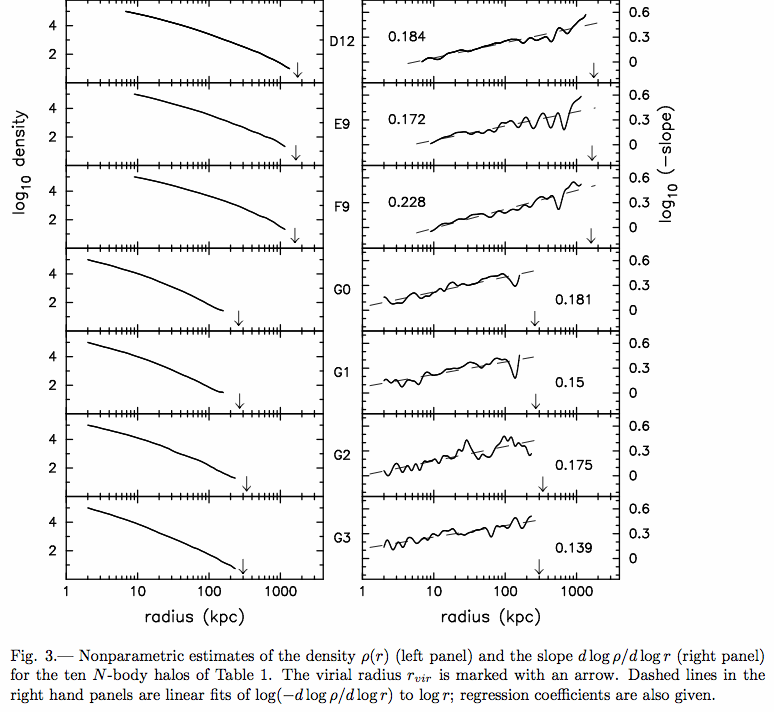
Left: some representative dark matter halo density profiles, resulting from large n-body simulations or hierarchical merging. The top ones are for galaxy cluster halos, while the bottom ones are for galaxy sized halos. The virial radius is roughly the location that separates the region for which dark matter particles have crossed the halo from the region in which the dark matter has not yet fallen into the halo.
Right: plots of the logarithmic gradient of the density profile (e.g.  in
in  (r)
(r)  r-
r- ). Notice how this gradient is itself a power law in radius, varying from about -1 in the center to about -3 in the outer parts.
). Notice how this gradient is itself a power law in radius, varying from about -1 in the center to about -3 in the outer parts.
This is why the NFW broken power law does quite well fitting halos. However, the Einasto profile, which allows a continuously varying logarithmic gradient, does even better.
Figure from Merrit et al 2005